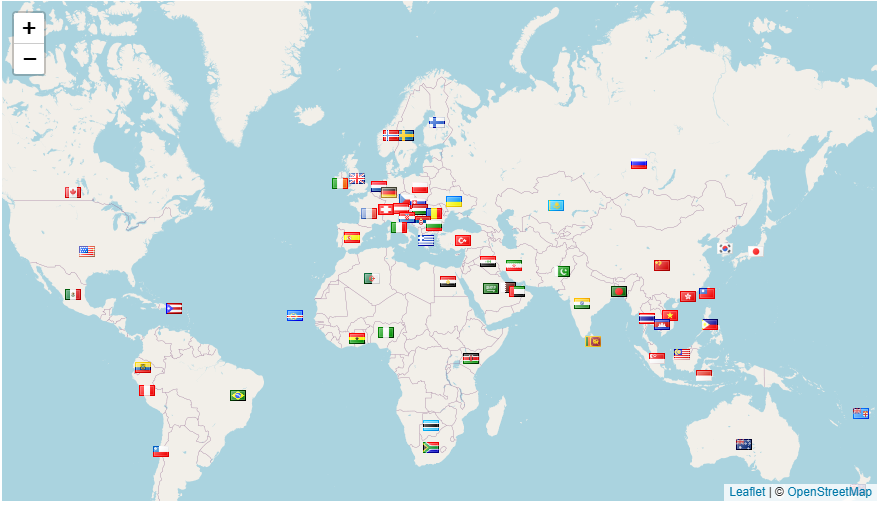Analysis of 3D Printing Applications with ABS Filament Material for Designing Unmanned Aircraft Bodybuils
DOI:
https://doi.org/10.70822/evrmata.vi.28Keywords:
3D printing, ABS Filament, Unmanned aircraft.Abstract
This research applies 3D printing technology using ABS filament material in designing the body of an unmanned aircraft. A quantitative approach to the simulation results is used to highlight the technical superiority of unmanned airframes. The analysis includes aspects such as structural strength. These findings provide deep insight into the potential application of 3D printing technology in the aerospace industry, as well as its application to the design, production costs and performance of unmanned aircraft. The research results show that the use of 3D printing with ABS filament has the potential to produce a strong and light aircraft body. From the research, it was found that the ideal layer thickness parameter of 0.1 to 0.2 mm does not exceed half the size of the nozzle diameter of 0.4 mm to produce fine raster fibers on the aircraft body without a crew. From the research it was found that the ideal speed parameter for printing the aircraft body frame unmanned aircraft with ABS filament material at a speed of 30 mm/s to 50 mm/s to produce a stable raster fiber size on the aircraft body and the percentage parameter of a good fill for printing the body frame of an unmanned aircraft is at a value of 20% up to 40%. The research results found the best printing parameters for printing aircraft frames with the parameter formula of 0.15mm 3D layer height, 20% gyroid infill, with a speed of 30mm/s maximum tensile strength reaching 30.7 MPa. By considering the challenges and opportunities associated with the use of 3D printing technology, this research provides a solid foundation for further development in designing and producing unmanned aircraft bodies efficiently and innovatively.
References
L. Li, Q. Sun, C. Bellehumeur, and P. Gu, “Composite modeling and analysis for fabrication of FDM prototypes with locally controlled properties,” J Manuf Process, vol. 4, no. 2, pp. 129–141, 2002, doi: 10.1016/S1526-6125(02)70139-4.
B. M. Tymrak, M. Kreiger, and J. M. Pearce, “Mechanical properties of components fabricated with open-source 3-D printers under realistic environmental conditions,” Mater Des, vol. 58, pp. 242–246, 2014, doi: 10.1016/j.matdes.2014.02.038.
A. K. Sood, R. K. Ohdar, and S. S. Mahapatra, “Parametric appraisal of mechanical property of fused deposition modelling processed parts,” Mater Des, vol. 31, no. 1, pp. 287–295, Jan. 2010, doi: 10.1016/j.matdes.2009.06.016.
J. Gopinathan and I. Noh, “Recent trends in bioinks for 3D printing,” Biomaterials Research, vol. 22, no. 1. BioMed Central Ltd., Apr. 06, 2018. doi: 10.1186/s40824-018-0122-1.
O. A. Mohamed, S. H. Masood, and J. L. Bhowmik, “Optimization of fused deposition modeling process parameters: a review of current research and future prospects,” Adv Manuf, vol. 3, no. 1, pp. 42–53, Mar. 2015, doi: 10.1007/s40436-014-0097-7.
A. Dawood, B. M. Marti, V. Sauret-Jackson, and A. Darwood, “3D printing in dentistry,” Br Dent J, vol. 219, no. 11, pp. 521–529, Dec. 2015, doi: 10.1038/sj.bdj.2015.914.
R. B. Kristiawan, F. Imaduddin, D. Ariawan, Ubaidillah, and Z. Arifin, “A review on the fused deposition modeling (FDM) 3D printing: Filament processing, materials, and printing parameters,” Open Engineering, vol. 11, no. 1. De Gruyter Open Ltd, pp. 639–649, Jan. 01, 2021. doi: 10.1515/eng-2021-0063.
N. Graupner, A. S. Herrmann, and J. Müssig, “Natural and man-made cellulose fibre-reinforced poly(lactic acid) (PLA) composites: An overview about mechanical characteristics and application areas,” Compos Part A Appl Sci Manuf, vol. 40, no. 6–7, pp. 810–821, Jul. 2009, doi: 10.1016/j.compositesa.2009.04.003.
K. G. J. Christiyan, U. Chandrasekhar, and K. Venkateswarlu, “A study on the influence of process parameters on the Mechanical Properties of 3D printed ABS composite,” in IOP Conference Series: Materials Science and Engineering, Institute of Physics Publishing, Mar. 2016. doi: 10.1088/1757-899X/114/1/012109.
E. Ulu, E. Korkmaz, K. Yay, O. Burak Ozdoganlar, and L. Burak Kara, “Enhancing the Structural Performance of Additively Manufactured Objects Through Build Orientation Optimization,” Journal of Mechanical Design, vol. 137, no. 11, Nov. 2015, doi: 10.1115/1.4030998.
P. Ferretti et al., “Relationship between fdm 3d printing parameters study: Parameter optimization for lower defects,” Polymers (Basel), vol. 13, no. 13, Jul. 2021, doi: 10.3390/polym13132190.
S. Guessasma, S. Belhabib, and H. Nouri, “Effect of printing temperature on microstructure, thermal behavior and tensile properties of 3D printed nylon using fused deposition modeling,” J Appl Polym Sci, vol. 138, no. 14, Apr. 2021, doi: 10.1002/app.50162.
T. Letcher and M. Waytashek, “Material property testing of 3D-printed specimen in pla on an entry-level 3D printer,” in ASME International Mechanical Engineering Congress and Exposition, Proceedings (IMECE), American Society of Mechanical Engineers (ASME), 2014. doi: 10.1115/IMECE2014-39379.
I. Gibson, D. W. Rosen, and B. Stucker, Additive manufacturing technologies: Rapid prototyping to direct digital manufacturing. Springer US, 2010. doi: 10.1007/978-1-4419-1120-9.
F. Chuanxing, W. Qi, L. Hui, Z. Quancheng, and M. Wang, “Effects of Pea Protein on the Properties of Potato Starch-Based 3D Printing Materials,” International Journal of Food Engineering, vol. 14, no. 3, 2018, doi: 10.1515/ijfe-2017-0297.
I. D. Savu, S. V. Savu, D. Simion, N.-A. Sîrbu, M. Ciornei, and A. Ratiu, “PP in 3D Printing-Technical and Economic Aspects.” [Online]. Available: http://www.revmaterialeplastice.ro
O. S. Es-Said, J. Foyos, R. Noorani, M. Mendelson, R. Marloth, and B. A. Pregger, “Effect of layer orientation on mechanical properties of rapid prototyped samples,” Materials and Manufacturing Processes, vol. 15, no. 1, pp. 107–122, 2000, doi: 10.1080/10426910008912976.
V. Vega et al., “The effect of layer orientation on the mechanical properties and microstructure of a polymer,” J Mater Eng Perform, vol. 20, no. 6, pp. 978–988, Aug. 2011, doi: 10.1007/s11665-010-9740-z.
B. Pérez, H. Nykvist, A. F. Brøgger, M. B. Larsen, and M. F. Falkeborg, “Impact of macronutrients printability and 3D-printer parameters on 3D-food printing: A review,” Food Chem, vol. 287, pp. 249–257, Jul. 2019, doi: 10.1016/j.foodchem.2019.02.090.
E. G. Gordeev, A. S. Galushko, and V. P. Ananikov, “Improvement of quality of 3D printed objects by elimination of microscopic structural defects in fused deposition modeling,” PLoS One, vol. 13, no. 6, Jun. 2018, doi: 10.1371/journal.pone.0198370.






